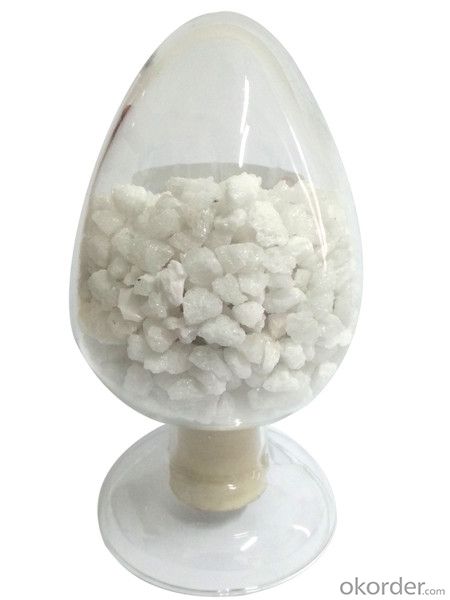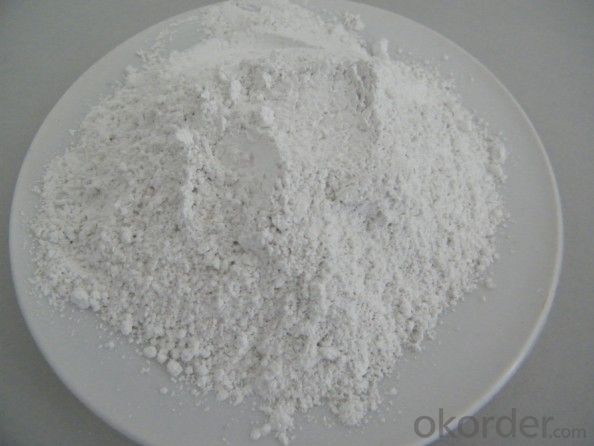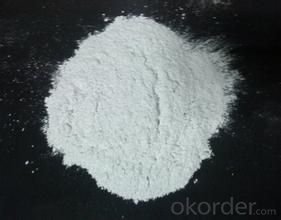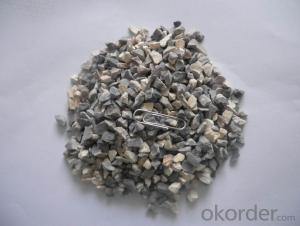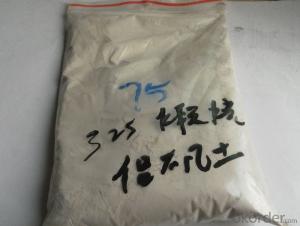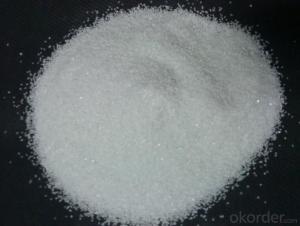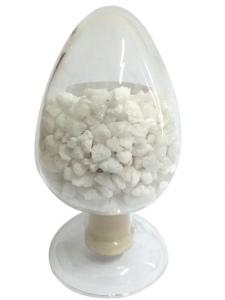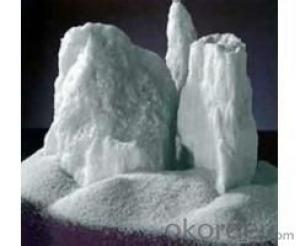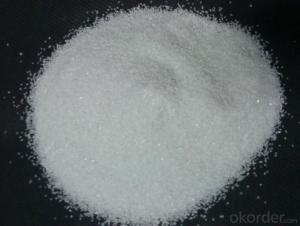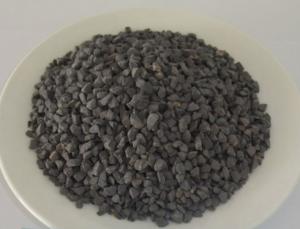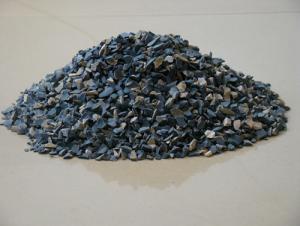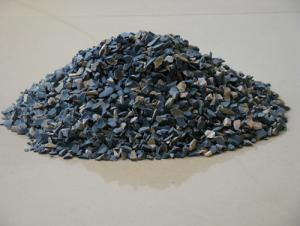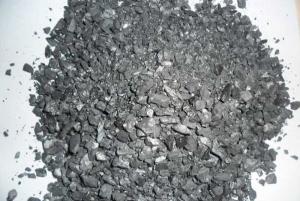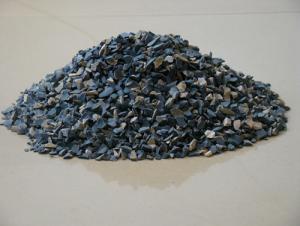Raw Materials for Refractory - White Fused Alumina
- Loading Port:
- Qingdao
- Payment Terms:
- TT OR LC
- Min Order Qty:
- 50 m.t
- Supply Capability:
- 5000 m.t/month
OKorder Service Pledge
OKorder Financial Service
You Might Also Like
White Fused Alumina For Refractory Material
Specifications
White Corundum/WFA for Lapping and Polishing
1 Professional manufacturer
2 High purity
3 Good hardness and toughness
Product Description
White corundum/WFA is made from the high quality aluminum oxide powder by melting above 2,000°c in the electric arc furance and cooling.
Physical Index
| True Density | ≥3.96g/cm3 |
| Micro Hardness | HV2000-2200 |
| Mosh Hardness | 9 |
| Refractoriness | ≥1850°c |
| Melting Point | 2250°c |
Chemical Index
| Application | Specification | Chemical Composion(%) | |
| Al2O3 | Na2O | ||
| Abrasives | F12#-80# | 99.4min | 0.4max |
| 90#-150# | 99.3min | 0.4max | |
| 180#-240# | 98.2min | 0.4max | |
| 1#-63# | 99.3min | 0.4max | |
| Refractory | 180#-0 200#-0 320#-0
| 99.3min | 0.4max |
| Powder | 0-1mm 1-3mm 3-5mm 5-8mm 8-12mm | 99min | 0.4max |
Size Available
1 Abrasives F8-F1500, P12-P220, JIS240-JIS3000
2 Refractoy 0-1mm, 1-3mm, 3-5mm, 200mesh, 325mesh
3 Other specifal specification could be supplied as required
Main Applications
1 Coated and bonded abrasive tools
2 Lapping and polishing processe
3 Precision casting
4 Refractory material
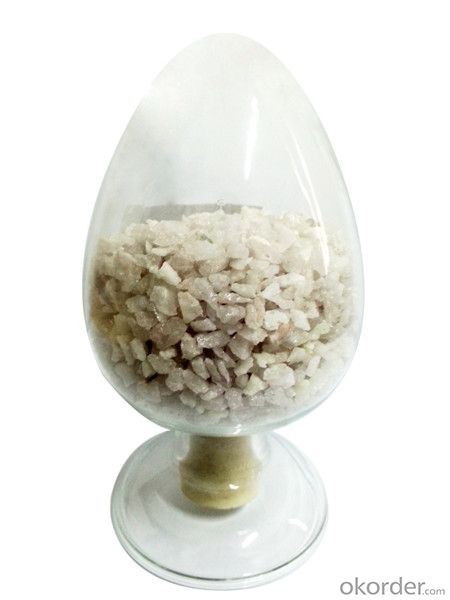
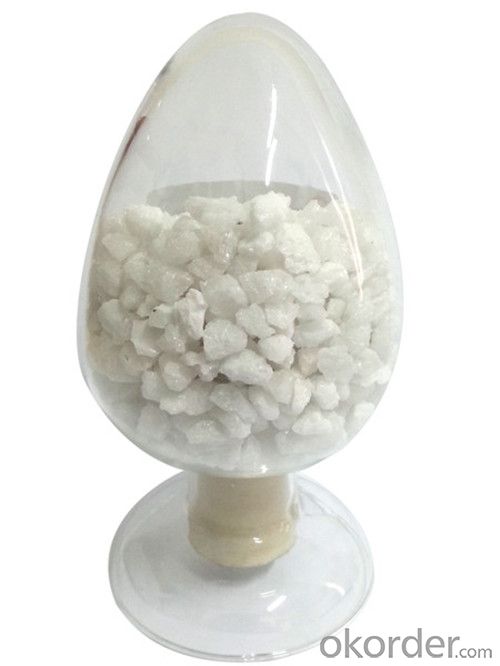
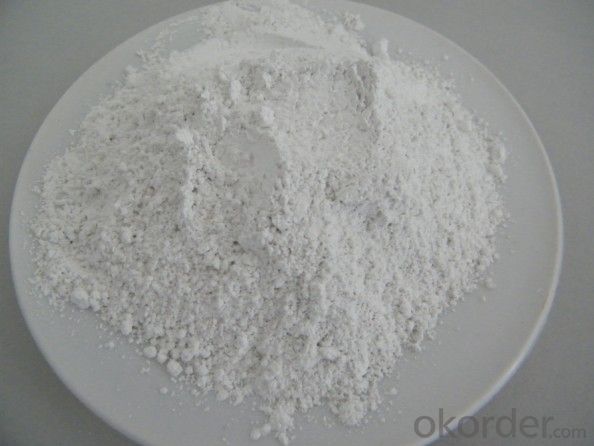
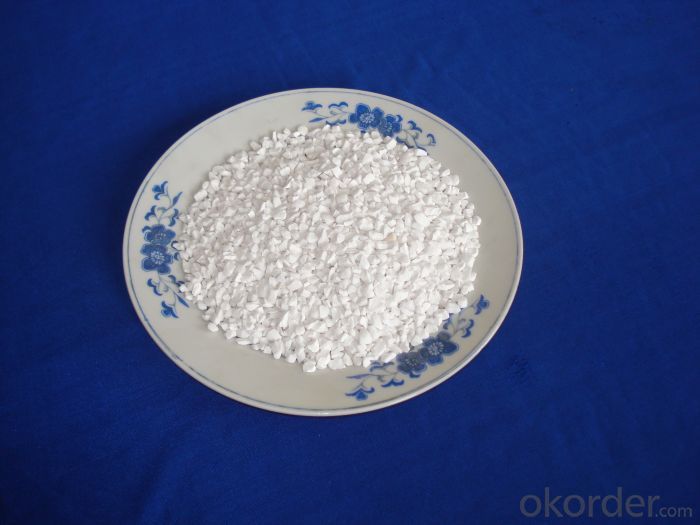
- Q: Does anyone know what kind of light fireproof materials are there?
- 二, 1, Gypsum plaster board With the building plaster as main raw material, gypsum plaster board is a kind of processed plate made by a special board for protective with an addition of additives and fibers as board core. Gypsum plaster board is characterized by light weight, sound insulation, heat insulation, strong processing performance and simple construction method. 2, Gypsum block Gypsum block is a kind of lightweight building gypsum product which is mainly made of building gypsum, and by adding water, stirring, casting and drying. During the process, , the fiber reinforced materials or light aggregates are allowed in, and the foaming agent can also be added. It has many advantages, such as sound insulation and fire prevention, convenient construction and so on. It is a kind of new and healthy wall material which produces low carbon, enhances environmental protection, and caters to the the times. 3, Fly ash brick is a new type of wall material, and bulk density is one of the main technical indexes. The weight of bulk density can be controlled according to the need of construction and adjustment of technical formula. The dry bulk density of the fly ash brick is about 1540 to 1640 kg / m 3, slightly lighter than the clay brick (1601800 kg /m 3). The flexural and compressive strength of fly ash brick is mainly determined by the production process, the formula and the hydrothermal synthesis reaction mode as well as the need of construction. According to the standards of architectural material industry (JC239 - 2001) released by People's Republic of China, the average value of the flexural strength is 2.5 ~ 6.2Mpa, compressive strength is between 10 ~ 30Mpa. I hope this will be helpful to you
- Q: What are the requirements of refractory temperature of refractory brick?
- Oxygen fluctuation of load once happened during operation. Sometimes oxygen control valve will cause oxygen fluctuation of load, and sometimes large particles will block valve of high pressure coal slurry pump. The sudden drop in flow of coal slurry may cause relative excess of oxygen. Oxygen fluctuations directly cause fluctuations in furnace temperature. The range of oxygen fluctuations is 500m?-600m?. The maximum can reach about 1000m?. A sudden increase in oxygen causes a sudden increase in furnace temperature, which will suddenly burn out high-temperature thermocouple. The situation has a great influence on refractory brick and should be avoided. Furnace temperature is very inportant to life of lining of refractory bricks, so it should be strictly controlled not to overheat. There is a cinder layer on the surface of refractory bricks under the condition of normal production. In fact, cinder layer is dynamic. If the temperature is low, cinder layer is thick. If the temperature is high, cinder layer is thin. Appropriate cinder layer may slow the scour of high temperature gas and molten slag. The requirement of refractory brick is higher than that of stoves which use heavy oil as raw material. The main reason is permeability and corrosion of molten slag to refractory material. When replacing refractory bricks, it is found that penetration thickness is 10mm-20mm. After slag penetrates, strength decreases significantly. If temperature is high, erosion intensifies. According to the relevant information, when the operating temperature exceeds 1400 ℃, etching effect multiplies.
- Q: How to divided the grade of external wall thermal insulation materials?
- Synthesized the three versions of GB8624 (1997,2006,2011), external wall thermal insulation fire?rating can be basically divided into: A1, A2, B1, B2, B3 and other levels. There are many technical indicators to make specific division, but I partly cannot report for a while, because it is very professional and technical. Please contact Qingdao Shanfang Instrument Co., LTD for details, they specialized in the external wall thermal insulation materials fire?rating test
- Q: Who knows that among refractory materials, insulation boards from which refractory material industry is superior in quality?
- Using high temperature insulation material during casting process .In the molding, assembly the insulation?board on the ingot head or install heat insulation cap . There are three ways to install the molded steel insulation board and install insulation?board on at the head of the ingot, namely, clamping, nail fixation and mosaic technique.Compared with clay-based liner, the use of insulating board will improve high steel billet rate up to about 5% to 10%.
- Q: Which schools are the best schools in the world for learning knowledge about refractories?
- Wish it helps you out.
- Q: Who can introduce the external wall thermal insulation materials fire rating regulations?
- According to public fire-fighting [2007] No. 182, the contents of the notification on the implementation of a number of issues of national standards GB8624-2006 "building materials and products combustion performance classification", since there is large differences between the new version of the standard GB8624-2006 and the old version of GB8624-1997 in the principle, hierarchical structure and test methods. According to the cintent of notification, in order to ensure a smooth transition between the old and new standards, the current national standard "Fireproof? Specification of Building Interior Decoration?Design" GB50222, "fire?safety?rules of tall civil buildings design" GB50045, "Fireproof? Specification of Building Design" GB50016 have not completed the relevant amendments, the new classification method of GB8624-1997 and GB8624-2006 can be used for temporary reference in terms of combustion performance of materials . From GB8624-2006 standard implementation, the classification of combustion performance is too granular, which do not match to the actual construction of the current project in our country. Therefore, the relevant departments carry on the 3rd amendment for the GB8624-2006 standards, namely GB8624-2012, and it will be released on December 31, 2012 and implemented on October 1, 2013. The combustion grading requirements in the standard: Level A is non-combustible materials (products); level B1 is nonflammable material (products); level B2 is combustible materials (products); level B3 is flammable materials (products).
- Q: I would like to ask a friend that how much is the fire endurance of level A fireproofing glass?
- Fireproofing doors can be divided into Class A, Class B and Class C by the fire endurance, the fire endurance is seperately not less than 1.20h, 0.90h and 0.60h. Fireproofing glass is a kind of special glass which can retain its integrity and insulation in the prescribed fire test, it can be divided into three categories according to fire resistance rating: class A is the fireproofing glass with refractory integrity and refractory thermal insulation. Such glass has the properties of transmittance, fireproofing (smoke insulation, fire insulation, heat radiation shielding), sound insulation and shock resistance, which is suitable for architectural steel and wood fire doors, windows, partition walls, daylighting?roof, ceiling?screen, perspective floor and other building components required both transparent and fireproofing. Class B is a fireproofing glass with refractory integrity and thermal radiation intensity. Such fireproofing glass is mostly composite fireproofing glass with transmittance, fireproofing and smoke insulation. Class C is a fireproofing glass with refractory integrity. Such glass has the features of transmittance, fireproofing, smoke insulation and high strength. it can used in partition wall, fire window and outdoor curtain wall without the thermal insulation requirements. fireproofing glass can be divided into composite fireproofing galss and monolithic fireproofing glass by the structure.
- Q: What parts of cement kilns are refractories used on?
- Generally they are used in cyclone, feed pipe, and duct and refractories are high-strength alkali-resistant castable, calcium silicate board, high-strength alkali-resistant brick, dome-shaped alkali resistant brick. Refractories in smoke chamber are high-alumina refractory castable, anti-skinning pouring material and calcium silicate board. Refractories in duct are high-strength alkali-resistant bricks, calcium silicate boards and steel fiber reinforced castable. Refractories in hooding parts of kiln are high strength castable high alumina and calcium silicate board. Refractories in rotary kiln are phosphate bonded high alumina brick, silmo brick, magnesia chrome brick, steel fiber reinforced castable. Refractories in grate?cooler are vault alkali brick, high alumina refractory castable, steel fiber reinforced castable and calcium silicate board. Refractory in coal burner is dedicated castable for coal burner.
- Q: what materials can make external wall fireproofing paint have the fireproofing effect
- Adding flame retardant or fire retardant materials can be fireproofing, which commonly referred to as the external walls of fire retardant coating or fire retardant coating. Principle: Fireproof paint itself is flame-retardant or non-combustible, so that the protected base material can not directly contact with the air in order to the ignition delay and reducing the burning speed; except that, it also has a lower thermal conductivity, which can delay the transfer of flame temperature to the protected base material; fireproof paint thermal can decompose non-combustible inert gas by heating to dilute the thermal decomposition of combustible gas in protected object, making it difficult to burn or slow down the speed of burning.
- Q: How to classify fire resistance rating of brick-concrete structure?
- In order to ensure the safety of the building, the fire protection measures must be taken to make it have a certain degree of fire resistance, even if there is a fire, it will not cause too much damage. According to the national conditions of our country, and in the light of other countries standards, < high-rise civil building fire protection design specification > defines fireproof rank of high-rise civil buildings into level one and two; < code for fire protection design of buildings > divides the rank into level one, two, three, four, level one is the highest level, level four is the lowest. Besides that the minimum fire resistance of the building component is specified, buildings of fire resistance rating also specified requirements for combustion performance. Because the component with the same fire resistance limit is different, it is different in the fire.According to our country national standard < building design fire protection code >, the fire resistance rating of the building is divided into four levels. The fire resistance of a building is determined by the combustion performance and fire resistance of building components (such as beams, columns, floors, walls, etc.). Generally speaking, the fire resistance building of level one is a mixed structure of reinforced concrete structure or a mixture of brick wall and steel concrete structure; the fire resistance building of level two is a mixed structure of steel truss structure, reinforced concrete column and brick wall; the fire resistance building of level three is brick-wood structure made of wood roof and brick wall; the fire resistance building of level four is combustible structure which is composed of wood roof and non-combustible wall.
Send your message to us
Raw Materials for Refractory - White Fused Alumina
- Loading Port:
- Qingdao
- Payment Terms:
- TT OR LC
- Min Order Qty:
- 50 m.t
- Supply Capability:
- 5000 m.t/month
OKorder Service Pledge
OKorder Financial Service
Similar products
Hot products
Hot Searches





